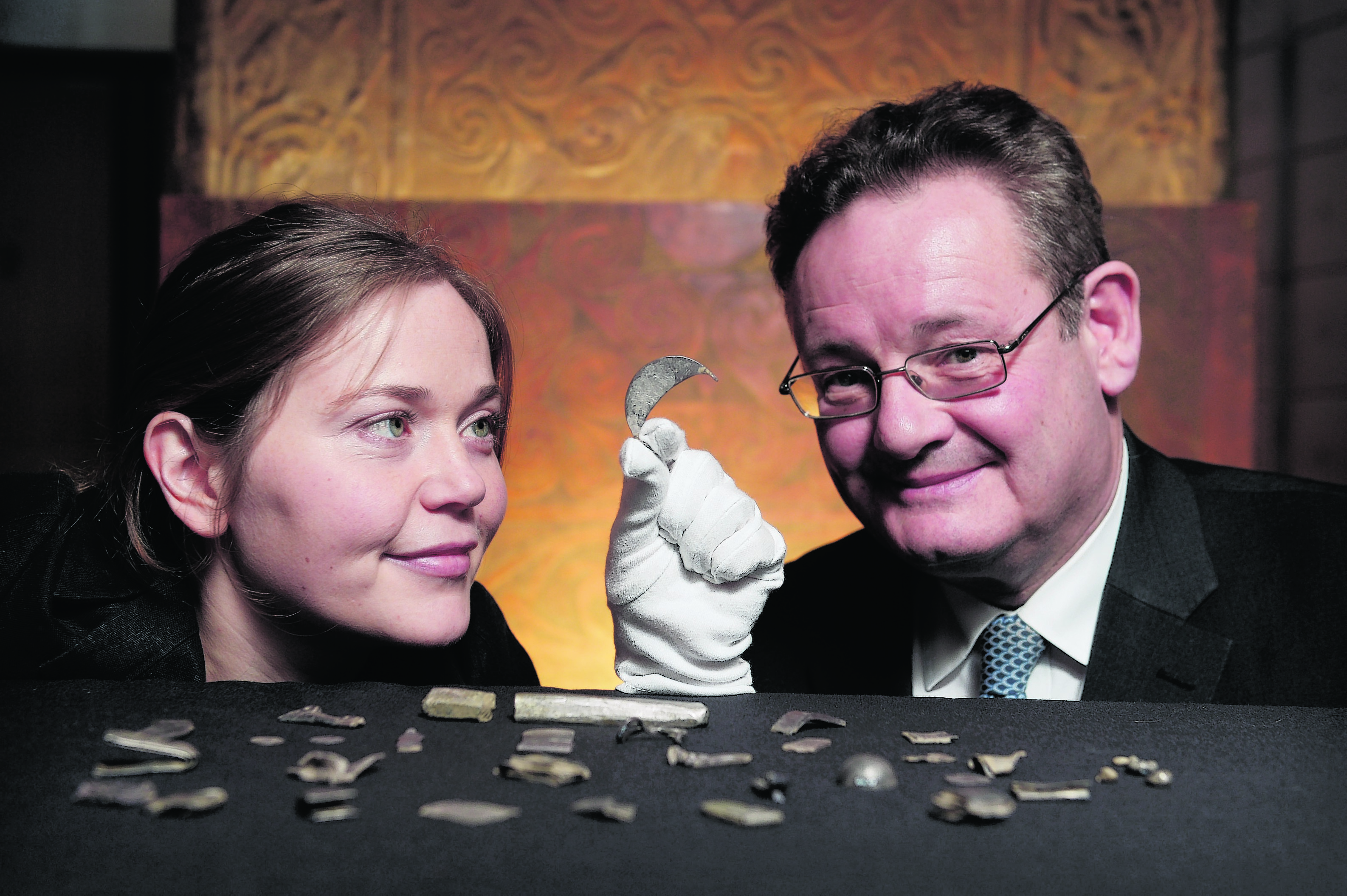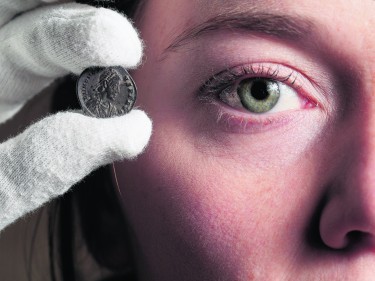It’s always fascinating to learn about the people who walked this part of the world before us. At the King’s Museum, housed in the former Town House in Old Aberdeen, there’s a chance to learn about those who lived in Pictish times, via the current exhibition, Crafting Kingdoms: The Rise of the Northern Picts.
Some time ago, archaeologists from National Museums Scotland and Aberdeen University’s Northern Picts Project unearthed a hoard of late-Roman and Pictish silver buried in a field in Aberdeenshire, which includes more than 100 pieces of hacked-up silver, coins and jewellery. The discovery – which is the most northern late-Roman hacksilver hoard to be found in Europe – will now be analysed, given descriptions and catalogued through The Glenmorangie Research Project.
The new initiative also marks a further three-year sponsorship of National Museums Scotland to support the study and understanding of early mediaeval Scotland (300-900AD) by the Scottish whisky distiller.
Dr Martin Goldberg, senior curator, early historic collections, National Museums Scotland, said: “We are delighted that the Glenmorangie Company’s continued support will enable us to research thoroughly this exciting new find of late-Roman and Pictish silver, discovered through our work with Aberdeen University. It is a hugely important discovery, being Europe’s most northerly late-Roman hacksilver hoard, and also containing otherwise unique Pictish silver.
“The research project will enable us to shed new light on the interaction between the Picts and the late-Roman world and reconsider what some older finds in our collection can tell us about early mediaeval Scotland.”
The project will enable further investigation into the importance of silver, from the very earliest appearance in Scotland during Roman times to its use in decorating later high-status silver objects. It also funds a new post – the Glenmorangie research fellow – with Alice Blackwell, who holds a masters degree in archaeology from the University of Glasgow, appointed to lead the study.
Director of corporate social responsibility at the Glenmorangie Company Hamish Torrie said: “We have been enthusiastic partners of National Museums Scotland since 2008, and are delighted to continue to play our part in helping to unravel the mysteries of early Scotland.”
This new find is a significant addition to the story of early Scottish silver. The breadth of National Museums Scotland’s collections, with the support of the Glenmorangie Company, put the museum in a great position to explore how silver, as a new and exotic substance, quickly became the most prestigious material for displaying power in early mediaeval Scotland.
Dr Gordon Noble, senior lecturer, Department of Archaeology, Aberdeen University, who led the fieldwork as part of the university’s Northern Picts Project, said: “This exciting new find is part of a broader phenomenon of hacksilver hoards which stretch across Europe from the 4th to the 6th centuries AD, when the western Roman Empire was in decline. Silver objects were chopped up into bullion and then used and exchanged as payment, bribes, tribute and reward. People buried their wealth to keep it safe, but many did not return to recover their hoard.
“The new finds include late-Roman coins, pieces of late-Roman silver vessels, bracelet and brooch fragments and other objects that would have been highly prized objects in their day. Our work in north-east Scotland is increasingly showing that Pictish communities in this area were part of powerful kingdoms in the early mediaeval period. “
Among the elements of the hoard on display at the museum are a beautiful Pictish silver chain and a carved stone depicting a sea eagle, along with loans of Pictish silver and other artefacts from Aberdeenshire Museums, National Museums Scotland and the British Museum. The exhibition also includes experimental reconstructions of Pictish metalworking by the Scottish Sculpture Workshop, and artefacts by Rhynie Woman artists’ collective.
Elements of the hoard are on
display.
WHERE: King’s Museum, Old Aberdeen Town House, High Street, Old Aberdeen
CONTACT: 01224 274330
OPENING TIMES: 11.30am-4.30pm, Tuesday to Saturday.
The exhibition can be seen
until May 31, 2015

